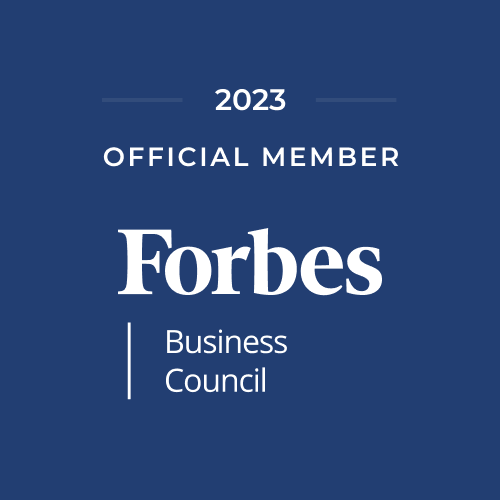Power Reads: 5 Interesting Articles That Will Help You This Week
/Each week, I select a few articles that rise above the fray and hopefully help you on your journey in leadership and the CRE world. They pull from one of four "corners": corporate real estate, technology, management science and anything positive. Each day we can become a better version of ourselves.
1. Progressive Workplace Design In A Post-Pandemic World
As the world continues to mull over when and how we will return to “normal” life again, a large part of the discussion involves the return to the workplace.
Tenants, landlords and design professionals alike are wondering how many days a week people will visit the office, how far apart they will sit, how amenities should be used, what common space design will look like, and more. Ultimately, we will want to be together again, but how do we do so in a way that makes people feel both productive and safe?
As architects and interior designers, we are fortunate to work with progressive developers who partner with us to bring big ideas to life and incorporate the thoughtful, health-and-wellness-focused design elements that last the test of time. While no one could have foreseen a global pandemic forcing us away from our office spaces temporarily, those of us who have been designing workplaces for long enough know that life events and news cycles spur trends and speed them up faster than they ever would have arrived on their own. As creatives, we observe and design accordingly.
2. 5 Models for the Post-Pandemic Workplace
Sean Gladwell/Getty Images
n March of 2020, most companies would have seen their offices as essential to their business. But as the pandemic dragged on, leaders have been surprised to learn that people often work just as productively from home.
Now that vaccines are becoming available and social distancing restrictions are being relaxed in some regions, leaders need to decide whether to bring employees back to the office, remain at home, or use this as an opportunity to adopt a new, possibly more beneficial workplace model.
Where employees work has significant implications, not only for the design of workplaces, but for how corporations allocate capital and manage staff. Experts are divided on what is likely to happen next. Some argue that our experiment with working from home has been so successful that remote work is here to stay. Others speculate that people are starving for face-to-face interaction, and that central business districts are primed to come roaring back. Splitting the difference, another group believes that the future of work won’t be either of these two extremes, but a hybrid solution between home and the office.
3. Real-Estate Sales Are Booming. The Rental Market Is Following Suit.
PHOTO: TIM VAN ASSELT FOR REALOGICS SOTHEBY'S INTERNATIONAL REALTY
The pandemic flight patterns that saw an influx of newcomers to cities like Tampa, Fla., Austin and Detroit has transformed the rental market. Low supply—and the desire of many to try out a destination before committing—have led to a rental boom that parallels that of the sales market.
In Nashville, Tenn., Shane Tallant of Village Real Estate has seen a marked increase in interest for high-end homes in the area, with large numbers of people coming from California, New York and Illinois. “We still get four seasons, our lack of state income tax is a huge benefit, the entertainment industry, the sports industry, it’s centrally located,” he says. “It’s growing faster than anybody would have expected.
In Reno, one of the fastest-growing markets, Rosi Booker of Sierra Sotheby’s International Realty has seen monthly rent prices skyrocket. “Where we’re seeing the demand going up is people waiting for a new home to be built, or who have not been able to find a house because everything’s going for so much over asking and you need so much cash to put down. So people are trying to get into rentals while they find a place to be able to buy.” She says that a 1,500-square-foot house that might have rented for $1,800 six months ago would now be priced around $2,500.
4. Built-to-Rent Suburbs are Poised to Spread Across the U.S.
ILLUSTRATION: JON KRAUSE
Today, built-to-rent homes make up just over 6% of new homes built in the U.S. every year, according to Hunter Housing Economics, a real estate consulting firm, which projects the number of these homes built annually will double by 2024.
The country’s largest home builders are planning for that future. Backed by banks and private investment firms, they have already bet billions on the sector, and will put down some $40 billion more during the next 18 months, Brad Hunter, founder of Hunter Housing Economics, projects. Built-to-rent subdivisions have been constructed or are under development in nearly 30 states. Taylor Morrison Home Corp. , Mr. Wood’s development partner and the nation’s fifth-largest builder, has said built-to-rent could soon become 50% of its total business. The company didn’t disclose the current share.
Homeownership is expected to decline over the next two decades—a trend that started with the generation after the baby boomers, according to the Urban Institute, a Washington, D.C., think tank that advocates for homeownership. Prices are rising faster than ever, leaving more people, including those with higher incomes, more likely to rent.
5. Move to a New City for Work? No Thanks
PHOTO: KRISTON JAE BETHEL FOR THE WALL STREET JOURNAL
“This has been sort of an awakening moment for people,” says Chris Porter, chief demographer at John Burns Real Estate Consulting in Irvine, Calif. “After what we went through last year, I think there might be a resetting of priorities.”
Many parents are loath to pluck their kids from schools to which they’re just now returning after a tumultuous stretch of virtual learning. Some companies are opening and expanding satellite locations that could preclude the need for a physical move. And workers who have grown used to the flexibility of logging on from the dining room table might scoff at the idea of putting their families through a huge transition just so they can commute to new headquarters each day.
“Part of it is, ‘I’m offered that level of freedom in my current position, so tell me why I should give that up,’ ” says John Touey, a Philadelphia-area executive recruiter with Salveson Stetson Group who’s noticed job candidates are much more resistant to relocating for new opportunities these days. “I think we want to make these decisions because they’re personally motivated and they’re right for us and our families, versus they’re right for our employers.”
Your success blesses others. I wish you a great a hugely impactful week!



























































































